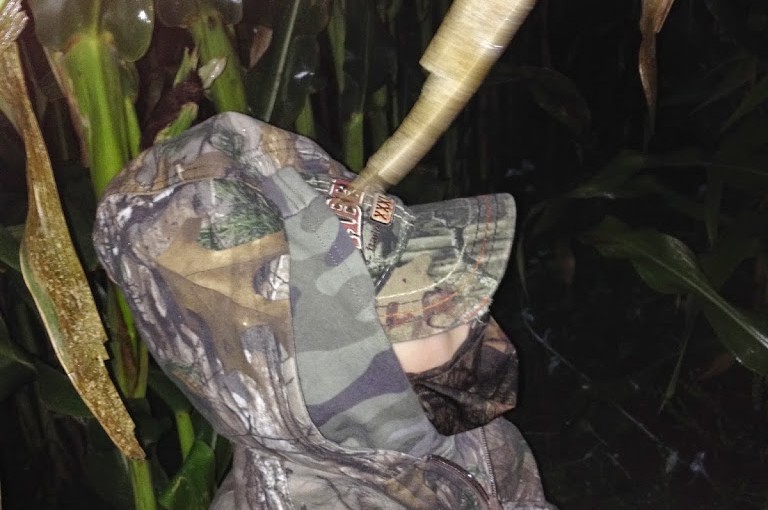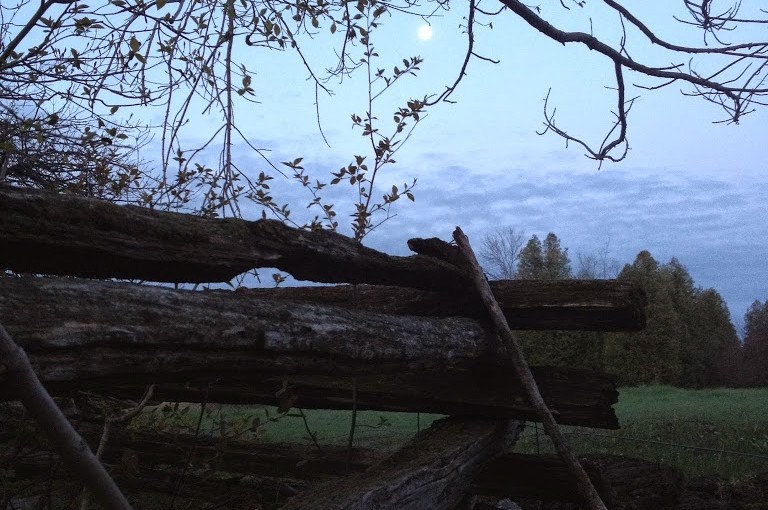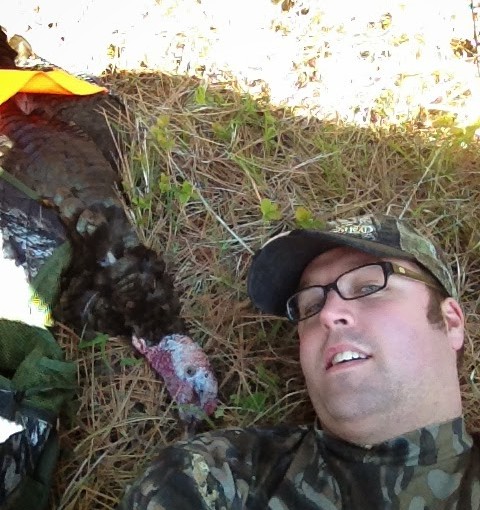It has been some time since I last had the time or inspiration to write something here, but a recent conversation, as well as some troubling media that I’ve seen has prompted my crotchety and opinionated side to come out for this particular post. Despite the murky and nebulous philosophical wrangling that is about to take place, this may become an item that will make recurring appearances throughout whatever lifespan this blog has.
Let me start with an anecdote that will nicely frame what follows.
When I was a much younger and much more academic man, I had a professor that really influenced how I viewed the world. He was relatively young by academic standards, being perhaps only seven or eight years my senior. He was extremely intelligent in matters historical, and he was very articulate. He was of a level of handsomeness that made every young female coed in my program an instant Scottish history devotee. He also was as passionate about soccer as I was, and he played the game in a similarly direct fashion to myself. Very often we would play a pick-up match for a couple of hours and then go grab some cold beer and pub food. All in all, a rather nice fellow who became a bit of a mentor for me, as at the time I was seriously considering a career in academia.
So where is all this pseudo-academic bro-mance going, and what in the blazes does it have to do with hunting?
This particular fellow was not a hunter, but he wasn’t an anti-hunter either, as I recall. I was much more passionate about converting non-hunters at the time, but he just wasn’t interested in the sport. Once over several post-soccer beers(or possibly post-exam beers, I can’t precisely recall) I directly asked him if he saw an inherent hypocrisy in his not being a hunter, even though he was a carnivore. He said no. I pressed him more, and while not a direct quote he answered me along the lines of this: everyone has what he called, at the time, a hypocrisy line. I’m sure he didn’t invent the term, and I’m sure others have recognized its existence, but I had not really considered the concept. Since then it has always intrigued me, and it is something that has really framed how I view the world, so I guess this professor actually did teach me something after all (his European Reformation class, which really was excellent, notwithstanding).
The hypocrisy line, which I have found to be a sure of a test for any argument, is basically the point in any given debate, discussion or decision at which one is willing to compromise a stated value. That value can be almost anything, from big important things like religious and political viewpoints, down to trivial things like which brand of whiskey you are preferential to (although I consider whiskey loyalty to be a VERY BIG thing). Make no mistake, the hypocrisy line exists, and it is something that people are constantly reconciling themselves to, even if they don’t realize they are doing it. It is extremely apt to understand the hypocrisy line if you participate as a hunter, and it is as pervasive as it is complicated.
By definition the hypocrisy line is intensely personal. No one knows your level of hypocrisy more than you yourself. And since I don’t want to make any presumptions about you, I’ll talk about my own personal hypocrisy line as it pertains to hunting.
First and foremost, my hypocrisy line pertains to the concept of fair chase. Right off hand, anything prohibited as illegal is by definition, beyond the realm of real valid debate. I’m sure there are hunting traditions that may fall outside the current structure of what the law allows, but that isn’t up for debate. Break the law, shoot over your limit, or endanger others, and the hypocrisy line isn’t applicable. But more interesting things start to happen when types of hunting are legal, because then the reconciliation with the hunting ‘ethic’, as it were, comes more tightly into focus.
I would state explicitly that canned shoots, high-fence hunting, or any other method that restricts not only the immediate, but also the longer term ability of game to evade the hunter are not “fair chase hunting” scenarios. I am a very large proponent of the ideals of the Boone & Crockett club, and a lot of my pre-existing bias about fair chase comes from their mission statement, as well as the ideals handed down by my hunting mentors (which I consider to be a positive for of brainwashing).
But my belief in fair chase comes at a price, and that price is my own personal hypocrisy line.
I am rabidly opposed to baiting for bears. I consider the practice of habituating a bear to a set location, and sometimes part of the day, for what is essentially a feeding time is deplorable. One could have as easy a time going to the local zoo and shooting a bear when the frozen meatsicle is thrown into their exhibit. I consider bear baiting at large to be an act of standing and shooting, and not even remotely equivalent to “hunting”. But in terms of explicit fair chase principles almost every organization in the world considers it ethical and accepted. So all my moral outrage won’t mean spit. Proponents of the practice of bear baiting point to the benefits of predictable, humane shots on basically stationary targets, as well as allowing the hunter time to make informed decisions surrounding the sex of the bear and whether it is a mature, healthy animal. Fair enough, but still not as thorough an argument as would be required to change my mind.
However, I am not opposed to hunting waterfowl over recently harvested grain fields. In the eyes of many, even myself on occasion, this constitutes a hypocrisy. Much like baiting of bears, hunting ducks and geese over naturally occurring waste grain is legal in almost every jurisdiction. Where the difference for me lies is that the corn or wheat or peas or rice or whatever it may be is not being placed specifically as a waterfowl attractant, at least not where I hunt. But countless outfitters, guides, and private landowners also plant grain fields with the explicit purpose of attracting waterfowl, so the issue can be murky. Geese and ducks also become habituated to the food sources, and I’ve had on more than one occasion moments when geese were landing around me in a corn field, and I wasn’t even hiding. The birds just wanted to eat there, and it didn’t matter that I was standing around in the middle of the field.
It is completely legal to bait for deer, and food plotting is big business. I have hunted over bait sites of corn and apples for deer, and although I have never had any success in doing so, I have several family and friends that have shot deer in this method. Some of them have a sticky ethical conundrum, but others don’t, and I guess that’s fine. My hypocrisy line here is that I don’t consider this as egregiously unethical as bear-baiting because deer respond to bait nocturnally in general, and the predictability of deer frequenting bait is sporadic (based on trail camera photos I have reviewed) than with bears. Not much of an argument, I know, but that’s my hypocrisy line. I’m not completely comfortable with food-plotting, but again there is no truly debatable difference in hunting over food plots and hunting over bait, and if I’m going to be okay with one, I suppose I have to be okay with the other.
Advances in gear and equipment have also muddied the waters in which the definition of fair chase swims. High-powered firearms, precision optics, modern camouflage and scent-control, and ultra-realistic game calls (when deployed in the hands or mouth of a competent user) have all tilted the playing field, if only slightly, in favour of the hunter. Riflescopes can now provide hunters with precise aiming points based on wind direction and strength, caliber and bullet weight, and angle of the shot. All the hunter has to do is get within range and pull the trigger.
So is that the litmus test of hunting now? Is it just a matter of getting in range and pulling the trigger? Because these are no small feat in some cases, maybe they are. Are the lost arts of wingshooting, range estimation, and good old-fashioned woodsmanship becoming just that; lost?
I myself have reaped the benefits just this year of technology, on what was arguably the greatest hunt of my life to date. Ultra-comfortable footwear saw me up and down kilometers of mountain trails. Turkey calls using modern materials and realistic decoys drew the gobbler into range. Modern high-powered shotshells delivered their payload through a machined ultra-full choke into a very small shooting window, with lethal results. Hell, my companion and I even drove halfway into the mountains before starting our hunt; sixty years ago we would have had to packhorse in our camp in the hills and valleys, if we could even entertain a spring turkey hunt at all!
Did I have an ethical conundrum regarding ‘fair chase’ on my hands when that tom turkey fell over? I can say confidently that I did not. So is that my hypocrisy line, or is that just modern hunting? And, in a more complex examination, is it both? Is modern hunting an already hypocritical endeavor?
This is how I manage to remain unpopular, by the way.
Perhaps the bottom line is that this entire application of the hypocrisy line into hunting is a byproduct of our human evolution. After all, did ancient societies debate whether a thrown spear was more ethical than an atlatl or an arrow propelled by the first archer’s bow? Was there an argument about right and wrong when primitive hunters learned to mimic the calls of their prey? Probably not, because I suspect survival and sustenance were higher up on the list of primitive hunting priorities than the moral complications posed by what they defined as technology.
With that said, the modern hunting reality, despite the position of many vested interests, is that we are not in a survival situation. We are all (hopefully) lovers of wild game on the table, but our sustenance does not hinge on the hunt anymore, and these changes are what brings the ethical debate of fair chase into such focus. With no compelling survival reasons related to much of what constitutes modern hunting in the developed world, justification and precision in rhetoric is required. For many this justification or debate is extraneous and, dare I say, bullshit.
But that would be taking too narrow a view. The linear thinking and closed-minded in the hunting fraternity will argue that no justification for the hunting tradition in the modern world is required. The linear thinking and closed-minded in the anti-hunting community will seize upon that and exploit it to their benefit. Because that’s how this song and dance has always gone.
Reconciling how you hunt with what your tolerance for hypocrisy is should not be a shameful process, nor should such self-examination be frowned upon or chided. A constant reevaluation of the social construct can raise troubling demons, but it can also enlighten and enhance the experience of the hunt, and it can prompt new challenges to the hunter willing to take them on. Having shot turkeys with a shotgun, perhaps I should try an archery hunt? Being reasonably skilled with a goose call, maybe I should attempt to ambush or stalk the birds instead.
I’m still a terribly unlucky and poorly skilled deer hunter so I need all the help I can get on that front.
In some ways, I suppose I would be happier if I had never encountered the concept of the hypocrisy line all those years ago as an inebriated undergraduate. And I’m sorry if this post becomes the first introduction of the concept for you; feel free to ignore it going forward. But if you choose to embrace it as a means of questioning the world, and in this case, the hunting tradition, do not be surprised by the opposition you find, and do not fear what you may learn about yourself.
Being out in the woods and fields is possibly the most enriching activity in my life right now, and I feel I owe it to something that gives me that much to understand its meaning.
 Inexplicably, the back flock made it to within sixty yards or so and then slid off line and made for an exit. Simultaneously the group that had landed jumped up and began to depart. Far to my right someone called the shot, and I swatted the nearest departing bird. More shots rang out to the right and we had brought four geese to hand. I trotted out to the bird I had shot and brought it back to my hiding spot. My son hopped off his little seat and came over to inspect the goose, which was a good-sized bird. He asked if it was dead and he tried to pick it up; it was a just a bit too awkward and heavy for him to hoist, but he gave it a good shot. A few more groups came near and although we shot okay, it was a bit of a slow morning overall. But the tepid bird movement couldn’t dampen my spirits, and my son was buoyant to be out hunting. Eventually his small stomach pressed me to get him some breakfast, and the rest of the crew thought bacon and eggs was a solid plan.
Inexplicably, the back flock made it to within sixty yards or so and then slid off line and made for an exit. Simultaneously the group that had landed jumped up and began to depart. Far to my right someone called the shot, and I swatted the nearest departing bird. More shots rang out to the right and we had brought four geese to hand. I trotted out to the bird I had shot and brought it back to my hiding spot. My son hopped off his little seat and came over to inspect the goose, which was a good-sized bird. He asked if it was dead and he tried to pick it up; it was a just a bit too awkward and heavy for him to hoist, but he gave it a good shot. A few more groups came near and although we shot okay, it was a bit of a slow morning overall. But the tepid bird movement couldn’t dampen my spirits, and my son was buoyant to be out hunting. Eventually his small stomach pressed me to get him some breakfast, and the rest of the crew thought bacon and eggs was a solid plan.















